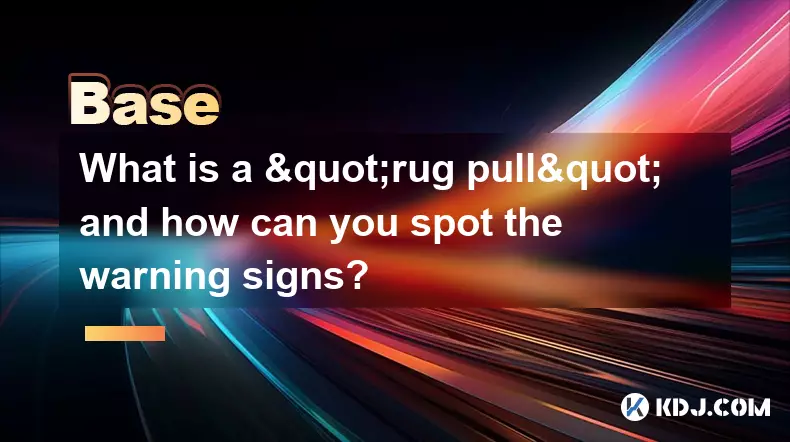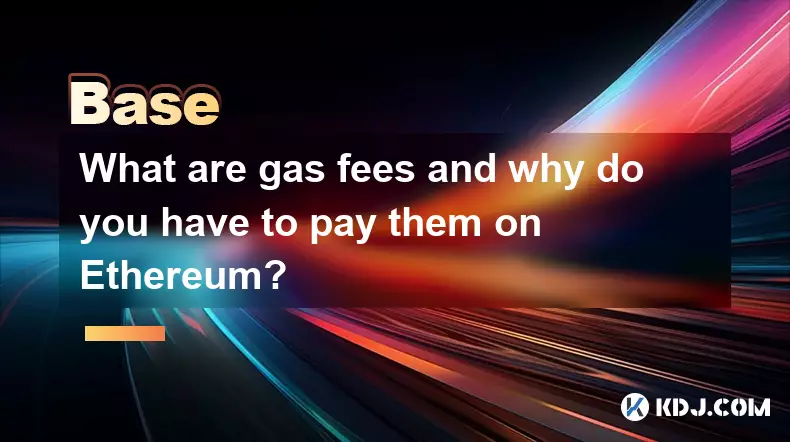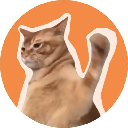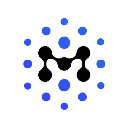-
 bitcoin
bitcoin $100977.009184 USD
-2.05% -
 ethereum
ethereum $3282.009150 USD
-3.23% -
 tether
tether $0.999813 USD
-0.02% -
 xrp
xrp $2.208254 USD
-4.89% -
 bnb
bnb $951.411089 USD
0.55% -
 solana
solana $155.761205 USD
-2.84% -
 usd-coin
usd-coin $1.000217 USD
0.02% -
 tron
tron $0.284475 USD
-1.28% -
 dogecoin
dogecoin $0.162363 USD
-1.53% -
 cardano
cardano $0.533988 USD
-0.47% -
 hyperliquid
hyperliquid $39.174339 USD
-3.22% -
 chainlink
chainlink $14.724828 USD
-1.16% -
 bitcoin-cash
bitcoin-cash $477.297986 USD
-1.28% -
 zcash
zcash $554.227426 USD
17.30% -
 ethena-usde
ethena-usde $0.998995 USD
-0.03%
What is Chainlink (LINK) and what problem does it solve
Chainlink solves blockchain's oracle problem by decentralizing data access, ensuring smart contracts receive accurate real-world inputs through a trust-minimized network of node operators.
Jul 11, 2025 at 03:50 pm

Understanding Chainlink (LINK)
Chainlink is a decentralized oracle network that enables smart contracts on blockchain platforms to securely connect with real-world data and external systems. The native cryptocurrency of the Chainlink network is LINK, which serves as an incentive mechanism for node operators who provide accurate and reliable off-chain data.
The core function of Chainlink revolves around bridging the gap between on-chain smart contracts and off-chain data sources. Since blockchains are isolated environments, they cannot directly access information from the internet or traditional databases. This limitation restricts the use cases of smart contracts in areas like finance, insurance, and supply chain management. Chainlink solves this by acting as a trust-minimized middleware that delivers verified external data to smart contracts.
Smart contracts require precise inputs to execute correctly, and any faulty or manipulated data can lead to unintended outcomes.
The Problem: Data Isolation in Smart Contracts
One of the most significant challenges in blockchain technology is the inability of smart contracts to fetch live, real-world data. For instance, if a DeFi lending platform needs to determine the current price of Ethereum, it cannot do so without an external source. Similarly, an insurance policy based on weather conditions would need up-to-date meteorological data to trigger payouts automatically.
This creates a dependency on centralized oracles—third-party services that feed data into smart contracts. However, these single-source providers introduce a point of failure and undermine the decentralization principle of blockchain. If the centralized oracle gets hacked, goes offline, or provides incorrect data, the smart contract's execution becomes compromised.
Centralized oracles pose risks such as manipulation, downtime, and lack of transparency, which contradict the trustless nature of blockchain systems.
How Chainlink Solves the Oracle Problem
Chainlink addresses the limitations of centralized oracles by decentralizing the data sourcing process. Instead of relying on a single provider, Chainlink aggregates data from multiple independent oracle nodes. These nodes retrieve information from various external APIs and deliver it to the Chainlink network.
Once the data is collected, Chainlink employs a reputation system and economic incentives to ensure accuracy. Node operators stake LINK tokens as collateral, and those who submit incorrect or delayed data risk losing their stake. This staking mechanism encourages honest behavior among participants.
- Data Aggregation: Multiple oracle nodes gather data from different sources to reduce bias and increase reliability.
- Reputation System: Node performance is tracked and publicly visible, allowing users to choose trustworthy providers.
- Staking Mechanism: Economic penalties deter malicious or inaccurate data reporting.
Use Cases Enabled by Chainlink
By solving the oracle problem, Chainlink unlocks a wide range of applications across industries. One of the most prominent sectors benefiting from Chainlink’s infrastructure is DeFi (Decentralized Finance). Platforms like Aave and Synthetix rely on Chainlink oracles to fetch accurate asset prices, enabling secure lending, borrowing, and synthetic asset creation.
Another critical application is in insurance, where smart contracts can automatically issue claims based on verified real-world events. For example, crop insurance policies can be triggered when weather data indicates a drought, reducing administrative overhead and fraud.
- Supply Chain: Track product authenticity using IoT devices connected via Chainlink oracles.
- Gaming: Use random number generation through Chainlink VRF to ensure fairness in games.
- Prediction Markets: Settle bets based on real-world event outcomes fetched by Chainlink nodes.
Technical Components of Chainlink
Chainlink operates using several key components that work together to maintain its decentralized oracle functionality. At the heart of the system are the node operators, who run Chainlink software and connect to external APIs. These nodes are responsible for fetching and transmitting data to the blockchain.
The on-chain component consists of smart contracts that manage the selection of oracles, collect responses, and aggregate results. Chainlink also uses Service Level Agreements (SLAs) to define the terms under which data should be delivered, including parameters like response time and data source.
- Chainlink Core: Software that runs on each node and facilitates communication with external APIs.
- Adapter Layer: Transforms external data into a format compatible with blockchain smart contracts.
- Aggregation Contract: Combines responses from multiple nodes to produce a final output used by the requesting contract.
Frequently Asked Questions (FAQ)
Q: How does Chainlink ensure data accuracy?Chainlink ensures data accuracy by aggregating responses from multiple independent nodes and applying economic incentives through staking. Nodes that provide incorrect data lose their stake, promoting honest behavior.
Q: Can anyone become a Chainlink node operator?Yes, anyone can become a Chainlink node operator provided they meet technical requirements and are willing to stake LINK tokens. Operators must maintain uptime and data integrity to earn rewards.
Q: What happens if a Chainlink node goes offline?If a node fails to respond within the agreed-upon timeframe, it may not receive rewards for that request. Repeated failures could harm the node’s reputation and lead to reduced future job opportunities.
Q: Which blockchains support Chainlink?Chainlink supports multiple blockchains, including Ethereum, Binance Smart Chain, Polygon, Avalanche, and many others. It is designed to be blockchain-agnostic, allowing integration with new networks as needed.
Disclaimer:info@kdj.com
The information provided is not trading advice. kdj.com does not assume any responsibility for any investments made based on the information provided in this article. Cryptocurrencies are highly volatile and it is highly recommended that you invest with caution after thorough research!
If you believe that the content used on this website infringes your copyright, please contact us immediately (info@kdj.com) and we will delete it promptly.
- Vande Mataram at 150: Stamps, Coins, and a Year-Long Celebration
- 2025-11-07 14:45:01
- Pi Network: Alignment, Not Just Speed, Is the Future of Crypto
- 2025-11-07 13:00:02
- Pi Network: Life Changes and a New Era Dawns for Crypto Pioneers
- 2025-11-07 13:00:02
- Bonhams Hong Kong: Rare Watches Echo Through Time
- 2025-11-07 12:35:01
- Unverified Apps, PiCoin, and a Costly Lesson: Navigating the Wild West of Crypto
- 2025-11-07 13:05:01
- Fed Governors, FOMC, and Interest Rates: Navigating the Shifting Landscape
- 2025-11-07 13:05:01
Related knowledge

What is FUD (Fear, Uncertainty, and Doubt) and how does it impact the market?
Nov 07,2025 at 02:19pm
Understanding FUD in the Cryptocurrency Ecosystem1. FUD stands for Fear, Uncertainty, and Doubt, a psychological tactic used to influence perception a...

What is a "rug pull" and how can you spot the warning signs?
Nov 07,2025 at 02:39pm
Understanding Market Volatility in the Crypto Space1. Cryptocurrency markets are known for their extreme price fluctuations, often driven by speculati...

How does a crypto transaction get confirmed on the network?
Nov 07,2025 at 12:40pm
Understanding the Journey of a Cryptocurrency Transaction1. When a user initiates a cryptocurrency transaction, it is broadcasted to the network throu...

What is yield farming and how can you generate income with it?
Nov 07,2025 at 01:39pm
What Is Yield Farming in the Cryptocurrency Space?1. Yield farming is a method used by cryptocurrency holders to generate returns on their digital ass...

What is a crypto airdrop and how can you participate in one?
Nov 07,2025 at 11:20am
What Is a Crypto Airdrop?1. A crypto airdrop is a marketing strategy used by blockchain projects to distribute free tokens or coins to wallet addresse...

What are gas fees and why do you have to pay them on Ethereum?
Nov 07,2025 at 02:59pm
Understanding Gas Fees in the Ethereum Network1. Gas fees are payments made by users to compensate for the computational energy required to process an...

What is FUD (Fear, Uncertainty, and Doubt) and how does it impact the market?
Nov 07,2025 at 02:19pm
Understanding FUD in the Cryptocurrency Ecosystem1. FUD stands for Fear, Uncertainty, and Doubt, a psychological tactic used to influence perception a...

What is a "rug pull" and how can you spot the warning signs?
Nov 07,2025 at 02:39pm
Understanding Market Volatility in the Crypto Space1. Cryptocurrency markets are known for their extreme price fluctuations, often driven by speculati...

How does a crypto transaction get confirmed on the network?
Nov 07,2025 at 12:40pm
Understanding the Journey of a Cryptocurrency Transaction1. When a user initiates a cryptocurrency transaction, it is broadcasted to the network throu...

What is yield farming and how can you generate income with it?
Nov 07,2025 at 01:39pm
What Is Yield Farming in the Cryptocurrency Space?1. Yield farming is a method used by cryptocurrency holders to generate returns on their digital ass...

What is a crypto airdrop and how can you participate in one?
Nov 07,2025 at 11:20am
What Is a Crypto Airdrop?1. A crypto airdrop is a marketing strategy used by blockchain projects to distribute free tokens or coins to wallet addresse...

What are gas fees and why do you have to pay them on Ethereum?
Nov 07,2025 at 02:59pm
Understanding Gas Fees in the Ethereum Network1. Gas fees are payments made by users to compensate for the computational energy required to process an...
See all articles










































































